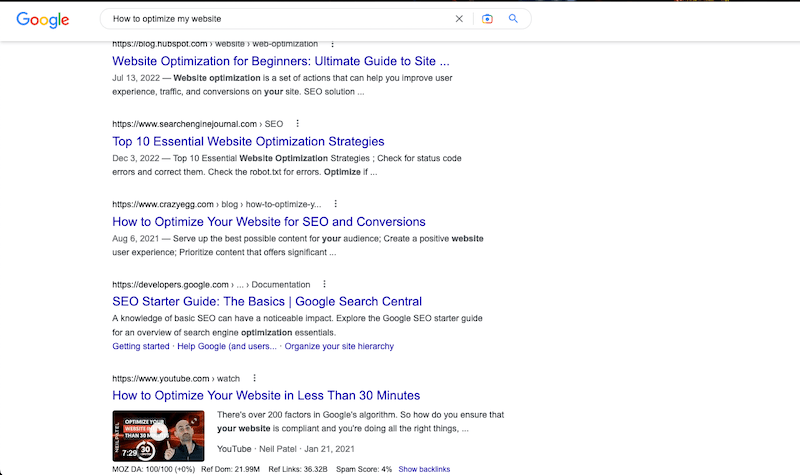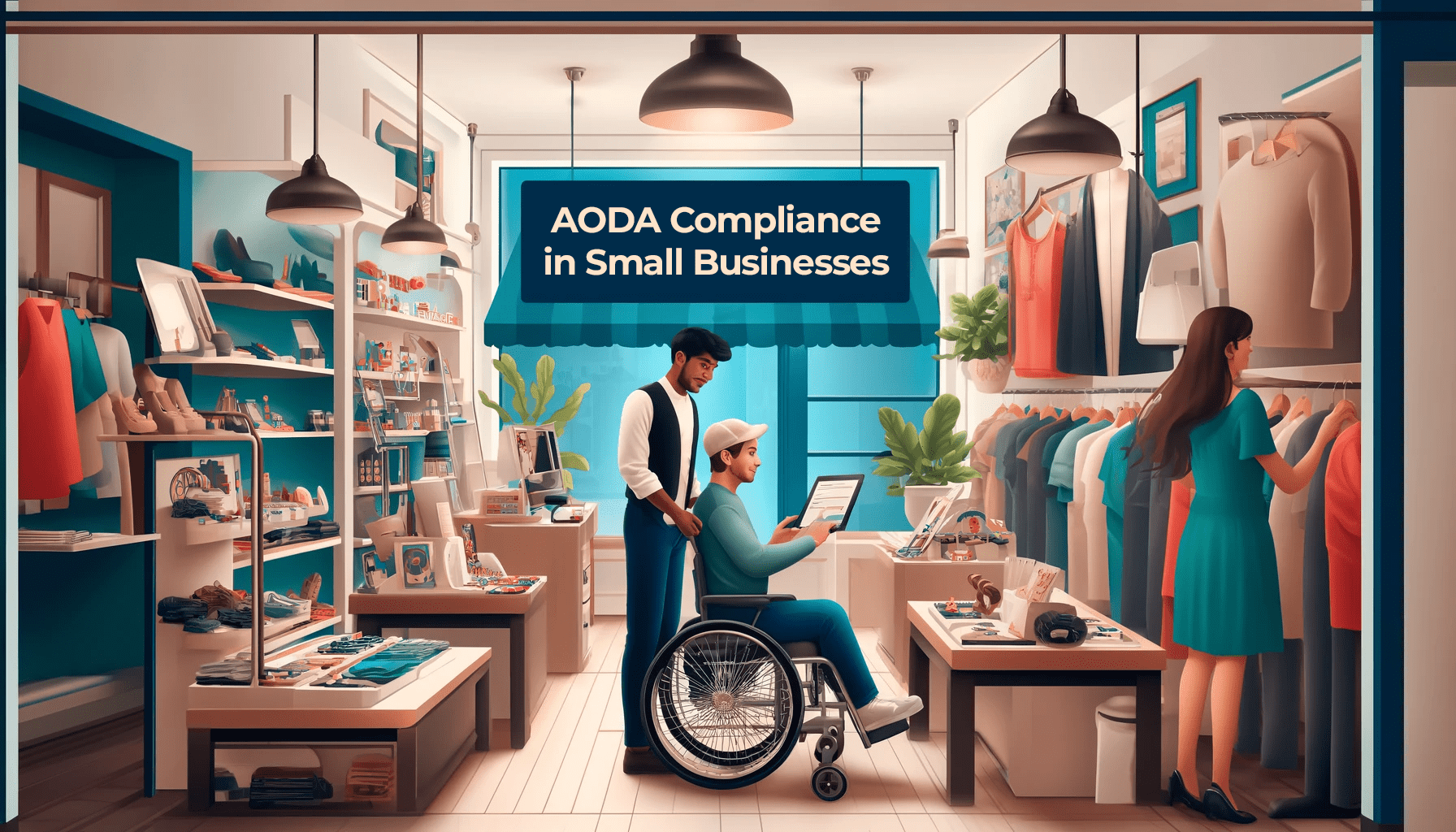The ever-evolving digital world has brought about a revolution in the way we communicate, share information, and complete daily tasks. These changes have become an essential part of our lives, both personally and professionally.
While the web has made life easier for many people, it has also created accessibility barriers and new challenges for people with disabilities. Web accessibility is an increasingly important requirement now, but the fact is that the web is not as accessible as it should be for disabled users.
These days, we use the same web browsers for everything: shopping, meetings, medical appointments, applications, etc. And when a website is designed with web accessibility in mind, it makes it possible by navigating consultations for people with disabilities to use a web page to accomplish two important things:
- Find the answers to their questions.
- Find the service or product they’re seeking.
As the internet continues to evolve and provide a convenient solution to manage our busy lives, businesses and organizations need to enhance their web accessibility and provide an accessible website. Let’s look at the five main reasons why web accessibility is beneficial to both users and businesses.
1. Web Accessibility is a matter of Inclusivity.
Web accessibility refers to a website that provides accessibility features for users with disabilities. As a public space, the internet should be accessible to everyone. And while some companies try to follow accessibility guidelines, often they incorporate only a few out of the many items on the accessibility checklist.
The two most common forms of disability people are aware of are visual impairments and hearing impairments. Usually, businesses try to add features to accommodate these disabilities. However, other forms of disabilities limit a person’s ability to navigate the internet. They include:
- Conditions that affect motor abilities, such as arthritis, paralysis, and muscular dystrophy.
- Conditions that affect cognitive abilities, such as epilepsy-related cognitive dysfunction.
Web accessibility allows people with disabilities to participate fully in society and access the same information and services as everyone else. This promotes equality, diversity, and inclusivity.
2. Web Accessibility improves the User Experience for Everyone.

Improving web accessibility creates a better user experience for everyone—especially people with disabilities.
When designing a website, the business’s main priority is to ensure they answer the user’s questions and guide them to the solution. This can be accomplished by providing blog articles and video content and by incorporating a UX-optimized design that’s web-accessible.
However, none of these options will provide equal access for those with disabilities if they aren’t launched with web accessibility in mind. For instance:
- Captions and transcripts make videos accessible for those who cannot hear the audio as well as those who watch the video on mute.
- Alternative text for images benefit people using screen readers, as well as those with slow internet connections or who prefer to browse without images.
Thankfully the Web Content Accessibility Guideline (WCAG) provides businesses with guidelines to follow. However, even with guidelines, important elements to creating more web-accessible content are still missing. Within the last four years, accessible websites had common WCAG 2 (Web Content Accessibility Guidelines 2) homepage failure types, including the following:
- Low contrast text
- Missing alt text for images
- Empty links
- Missing form input labels
- Empty buttons
- Missing document language
These items represent low-tech and high-tech accessibility features that someone with coding experience could optimize on a website. By taking the extra steps to optimize accessible websites, you provide the opportunity for disabled users to find solutions within your business.
3. Web Accessibility provides Better SEO Rankings & less Maintenance

Every business has one main: to drive traffic to its website. One method used to drive website traffic is search engine optimization (SEO), which helps your website rank higher in search results. By creating an accessible website, you increase your probability of ranking higher in search engine results pages (SERPs).
For instance, Google knows users want to find solutions to their questions as quickly as possible. As search crawlers visit websites online, they discover new information, how easy it is to navigate your site, and your site’s overall ability to help users. So building accessible websites broadens the user experience for those that rely on screen readers, closed-captioning, and keyboard functionality.
Roughly 50% of the website traffic for a business comes from organic search. For ultimate success, the goal is to be displayed amongst the top five search results on Google, which accounts for over 50% of all the clicks. A well-structured, accessible website goes a long way to meeting this goal.
Creating well-structured and accessible websites with, improved keywords and clear navigation, that is also mobile-optimized is just half of what you need to increase your SEO ranking. Enhancing your web accessibility makes up the other half.
4. Web Accessibility ensures Compliance with Regulations and Laws.

Web accessibility is not just a moral obligation but also a legal compliance issue. In many countries, including the US, UK, and Canada, anti-discrimination laws require businesses to make their websites accessible. Failure to comply can lead to lawsuits, legal action, or negative publicity.
In Canada, we have multiple laws to improve web accessibility within our society. Examples of web accessibility AODA requirements can be found in the following acts:
- ACA, Accessible Canada Act
- AODA, Accessibility for Ontarians with Disabilities Act
- AMA, Accessibility for Manitobans Act
- ACR, Accessible Canada Regulations
- ASC, Accessibilities Standards Canada
While each law has particular web content accessibility guidelines, the overall goal is to ensure businesses are taking the actions necessary to include web accessibility features that allow disabled users to access information, services, and products as someone without disabilities would.
5. Web Accessibility broadens your Customer Base.

If someone told you they had a checklist to help you broaden your customer base, would you take it?
Following the accessibility acts in Canada does exactly that.
By enhancing your web accessibility, you can reach a wider audience, including people with disabilities. This is an untapped market segment, estimated to have a collective buying power of up to $490 billion.
Accessible websites create equal opportunity and a level playing field, allowing businesses to tap into this potential customer base. And this is why web accessibility is important:
More people are buying things online.
In 2022, e-commerce stores in December alone generated over four billion Canadian dollars in sales. Due to the convenience of purchasing things online, e-commerce sales are projected to continue their growth.
However, people without disabilities aren’t the only ones that enjoy the convenience of online shopping—those with disabilities greatly benefit from it as well.
Therefore, ensuring your website’s customer journey is accessible—like adding alt text to product images and including clear text on all action buttons—helps provide a positive user experience to those with disabilities.
More people are turning to online learning.
Among the many things we learned during COVID was that our society could also function online. Although the universities closed down, many programs provided online learning to allow students to continue their education.
As the convenience of online learning grew, it tapped into a growing market. Online university learning is expected to reach over US$ four billion in 2023 and is also expected to continue growing.
And as technology advances in general, so does the technology that assists those with disabilities. Screen readers have improved to a point where they can now completely decipher a page, allowing someone that’s visually impaired to benefit from the online world as well.
Therefore, someone that relies on screen readers can (and should) receive an education online if the university’s courses and applications are accessible.
More people rely on technology to run daily chores.

It’s fair to say that everyone’s favorite service is the one that provides assistance with chores.
In today’s society, where it’s now normal for both heads of households to work a full-time job, services like housekeeping, dog walking, and even grocery shopping provide convenience. People with disabilities especially benefit from these services.
Web Accessibility is the Key Factor to Ensuring a Positive Web Experience for all.
Every business has a solution to their customer’s problem—it’s why they’re in business. But that solution is only helpful if it helps everyone seeking it. This is why web accessibility is important and not just a buzzword or a nice-to-have feature. It is a crucial aspect of web design that ensures everyone can interact with your website regardless of their abilities.
By creating an inclusive web environment, you can promote equality, foster better user experiences, comply with legal obligations, improve SEO rankings, and broaden your customer base.
Click the link below to talk to our accessibility experts and find out how we optimize your website’s accessibility. Contact Accessibility Partners







